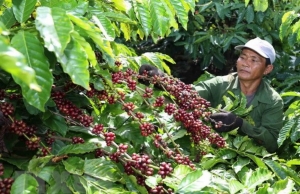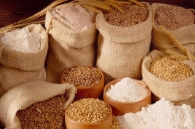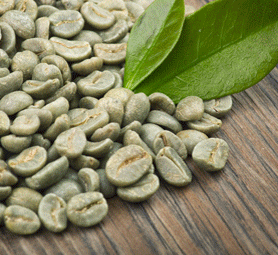HCMC – Although Vietnam is the world’s second biggest coffee exporter, around 90% of Vietnamese coffee products are mainly exported as raw beans, resulting in low export revenue.
“Vietnam’s Robusta coffee has yet to get trademark protection certificates from any country,” Thai Nhu Hiep, vice chairman of the Vietnam Coffee Cocoa Association (Vicofa), said.
Ho Van Muoi, chairman of the Dak Nong People’s Committee, said that raw coffee beans accounts for 99% of the province’s coffee export volume while the country’s figure is 90%.
Gia Lai has around 99,000 hectares under coffee cultivation, 80 coffee processing factories and facilities. The proportion of its processed coffee accounts for about 5.7% and the rest is exported as raw beans.
Nguoi Lao Dong newspaper and the Ministry of Agricultural and Rural Development.
Increasing the proportion of processed coffee products is also a solution to add value to Vietnamese coffee. Each container of Meet More coffee is valued 5-6 times higher than raw coffee beans, said Nguyen Ngoc Luan, CEO of Global Trading Connection Company.
Many experts believe it is necessary to address the root issues of the coffee industry, such as origin, quality, and brand building. Additionally, the Government needs to develop a plan to support businesses in borrowing loans, such as reducing interest rates.
Vietnam is currently the world’s largest producer of Robusta coffee and ranks second in coffee exports. The export value reached a record high of over US$4 billion in 2022, up 32% compared to the previous year, mainly due to reasonable prices and the global coffee undersupply.
Vietnam’s coffee culture is renowned, boasting iconic creations like Saigon’s iced coffee and Hanoi’s famed egg coffee. Adding a flavorful twist to the mix, salt coffee has burst onto the scene, becoming a quintessential representation of Hue’s culinary charm. This innovative concoction has swiftly won the hearts of both locals and tourists, offering a refreshing take on the coffee experience.
Crafting this delightful fusion of coastal and highland flavors is an art that demands a delicate balance of ingredients. It’s all about harmonizing that oceanic essence with the unique highland character, resulting in a morning elixir that resonates with many Vietnamese coffee aficionados.
Nailing the balance is crucial—too much bitterness, saltiness, or sweetness can throw off the whole show.
To bring this enchanting brew to life, baristas choose between Robusta and Arabica beans, skillfully using a stainless steel filter for brewing. The coffee leisurely drips into a cup with a dollop of condensed milk at its base. Once the brewing is done, the coffee and milk mingle in a stirring dance, reminiscent of the technique used for Vietnamese milk coffee.
Now, here’s where the magic happens—enter the salted whipped cream. Heavy cream gets whipped up with a dash of condensed milk and a sprinkle of white salt until it forms a luscious foam. This creamy cloud is then gently poured atop the milk coffee, creating a luxurious cap. The secret weapon here is the touch of salt, which masterfully tames the traditional coffee’s bitterness, mellows the condensed milk’s sweetness, and elevates the coffee’s inherent richness. It is a flexible treat too—enjoy it piping hot or chilled for a refreshing twist.
Those captivated by salt coffee can explore it in two enticing ways. Either stir the cream foam and coffee for a harmonious blend, or let them stay separate in layers. The first sip takes you on a flavor journey—starting with a hint of bitterness that tantalizes your taste buds, followed by the creamy indulgence merging with a playful pinch of saltiness that lingers softly on your palate. It is a symphony of flavors that plays out beautifully.
Ever-increasing coffee price leading to higher export value.
Vietnam’s coffee export revenue is expected to hit $4.5-5 billion in 2024 as a result of rising coffee prices, according to the Vietnam Coffee Cocoa Association (Vicofa).
Coffee output is estimated at 1.4 million tons.
Vietnamese enterprises earned over $4 billion from exporting coffee from the 2022-2023 crop between October 2022 and September 2023.
In the first eleven months of this year, Vietnam exported 1.38 million tons worth $3.54 billion, down 12.9 per cent in volume and 2.5 per cent in value year-on-year, figures from the General Department of Vietnam Customs show.
The average coffee price was $2,570 a ton, up 11.9 per cent compared to the same period last year.
Vietnam is currently the world’s second-largest coffee exporter.
Vietnam’s growth is among the highest in the region and the world, according to the GSO.
Vietnam has posted GDP growth of 5.05 per cent this year, according to the General Director of the General Statistics Office of Vietnam (GSO), Ms. Nguyen Thi Huong.
Growth in the fourth quarter was 6.72 per cent, higher than the 5.47 per cent recorded in the third quarter.
At a press conference in Hanoi on December 29, Ms. Huong said growth in 2023 failed to meet the annual target of 6.5 per cent but the result was nonetheless positive, with Vietnam being among economies posting the highest growth in the region and the world.
Data also shows that the macro-economy continued to be stabilized, inflation was properly brought under control, and the supply-demand of commodities was ensured, she added.
Of the total added value in the economy, the agriculture, forestry, and fisheries sector’s increased 3.83 per cent, contributing 8.84 per cent; industry and construction’s grew 3.74 per cent, contributing 28.87 per cent; and services’ surged 6.82 per cent, contributing 62.29 per cent.
Vietnam’s GDP is estimated at a total of $430 billion, according to Ms. Huong.
GDP per capita stands at some VND101.9 million ($4,284); a $160 increase against 2022.
Workplace productivity, meanwhile, was VND199.3 million ($8,380) per worker, a year-on-year rise of $274.
China still the country’s largest market in 2023.
Vietnam exported $1.2 billion worth of animal feed and raw materials in 2023 while importing $5.1 billion, according to the Ministry of Agriculture and Rural Development.
Export revenue reached $1.11 billion in the first eleven months, a year-on-year rise of 7 per cent.
China remained the biggest importer of Vietnam’s animal feed and raw materials during the eleven-month period, with $539.75 million, an increase 32.9 per cent compared to the same period of 2022 and accounting for 48.6 per cent of the total.
It was followed by Cambodia and Malaysia, with $155.55 million and $108.65 million, respectively, up 0.9 per cent and 30.2 per cent.
Vietnam now has 269 facilities producing animal feed, with a total capacity of 43.2 million tons, including 90 foreign-owned facilities.
Festival aimed at boosting trade links between the capital and other localities.
The Hanoi Agricultural Product Festival 2023 opened in Hoai Duc district on December 27.
The five-day festival will attract over 100 organizations and individuals from Hanoi and other localities introducing agricultural products and “One commune, One product” (OCOP) products at 145 booths.
It is aimed at promoting trade exchanges between Hanoi and elsewhere and boosting exports of agricultural products, according to Director of the Hanoi Department of Agriculture and Rural Development Nguyen Xuan Dai.
Opportunities will also be available to connect managers, scientists, businesses, farmers, and consumers.
Hanoi’s agricultural sector has continually developed and diversified its products in recent years and improved product quality, contributing to the capital’s socio-economic development, Mr. Dai said.
In particular, it has sped up agricultural restructuring, expanded markets, and promoted green and smart agriculture in connection with the development of services and rural tourism.
The capital has also paid attention to applying high technology in agricultural development and promoting organic agriculture and the circular economy.
Sector’s GDP growth at 3.83% in 2023.
Vietnam’s agricultural sector posted GDP growth of 3.83 per cent in 2023, the highest growth in a decade, according to the Ministry of Agriculture and Rural Development (MARD).
The total rice cultivation area reached 7.12 million ha, up 10,100 ha compared to 2022.
Rice output set a record of 43.5 million tons, up 800,000 tons.
The sector targets over 43 million tons in 2024.
Meanwhile, total aquaculture output reached over 9.3 billion tons, a year-on-year rise of 2.2 per cent, including more than 6.6 billion tons of fish, up 1.8 per cent, and 1.356 billion tons of shrimp, up 5 per cent.
Regarding forestry, the country planted an additional 298,200 ha of forest, down 2.7 per cent year-on-year. The total volume of wood exploited in 2023 was estimated at 20.8 million cu m, up 2.8 per cent year-on-year.
Bank raises charter capital for second time in the last three years.
United Overseas Bank (UOB) Vietnam increased its charter capital by 60 per cent on December 26 to approximately VND8 trillion (nearly $328 million) through a capital injection from its Singapore-based parent bank UOB, it announced on the same day.
This was UOB Vietnam’s second increase in charter capital in the past three years, demonstrating its strong commitment to investing in long-term growth in Vietnam.
Mr. Victor Ngo, CEO of UOB Vietnam, said Vietnam is a strategic market for UOB in ASEAN. The decision to raise its capital is evidence of its long-term commitment to Vietnam’s development and confidence in Vietnam’s significant potential.
This will also help UOB realize its ambition to become a leading retail bank and leading foreign bank in Vietnam, he said.
After 30 years in Vietnam, the bank has five branches in Ho Chi Minh City and Hanoi with over 1,300 employees. It maintained steady growth of over 30 per cent in total assets between 2018 and 2022.
Reductions to take effect from January 1 until June 30.
Value-added tax (VAT) rates on most goods and services will be cut by 2 per cent from January 1, under a new Decree from the government, the Government News has reported.
The 2 per cent reduction will be applicable to products and services subject to a 10 per cent rate, with exceptions for three groups of products and services, as follows.
Group 1: Telecommunications, financial activities, banking, securities, insurance, real estate business, metals and prefabricated products, mining products (excluding coal mining), coke coal, refined petroleum, and chemical products.
Group 2: Goods and services subject to special consumption taxes.
Group 3: Information technology under information technology laws.
The VAT reduction will be applied to all stages, including import, manufacturing, processing and trading.
The Decree will be in effect from January 1 to June 30, 2024.
In May and the first five months of 2022, Vietnamese coffee exports to the US decreased in volume but increased in value compared with the same time in 2021. The US is the fifth largest export market for Vietnamese coffee.
General Department of Vietnam Customs data show that in May 2022, Vietnam exported 9,340 tonnes of coffee worth US$22 million to the US, down 16.5 percent in volume but up 2.3 percent in value compared with May 2021. In the first five months, the export volume reached 50,580 tonnes, with the value reaching US$124.95 million, down 2.9 percent in volume but up 23.6 percent in value year-on-year.
The average price of Vietnamese coffee exports to the US in May 2022 was US$2,359 per tonne, down 5.9 percent compared with April but up 22.4 percent compared with May 2021. In the first five months, the average price was US$2,470 per tonne, up 27.2 percent year-on-year.
According to the Center for WTO and International Trade, in the first four months of 2022, the US imported 768,800 tonnes of coffee worth US$4.11 billion, up 10.8 percent in volume of 49.6 percent in value compared with the same period last year. The average import price was US$5,353 per tonne, up 35.1 percent. Notably, the average price of coffee imports from Vietnam increased 42.3 percent to US$3,451 per tonne.
While imports from Brazil decreased from 24.55 percent of the total US coffee imports in the first four months of 2021 to 21.94 percent in the first four months of 2022, Vietnamese coffee increased from 8.95 percent to 9.6 percent. In the 2020-2025 period, the US coffee market is forecast to grow an average 4.8 percent per year. Major factors boosting the market’s growth include the increasingly busy lifestyles and long working hours, which make coffee chains in the US more popular.
The US coffee market consists of the following segments: coffee beans, ground coffee, instant coffee, coffee capsules and coffee bags, distributed through points of sale at supermarkets, convenience stores, retailers and other distribution channels.
The US accepts only coffee products with origin traceability. Major standards required for coffee imports include Fairtrade USDA, Organic, Rainforest Alliance/UTZ Certified, Bird Friendly, Carbon Neutral, Organic, and Direct Trade.
According to the Foreign Trade Agency of the Ministry of Industry and Trade, the US is the fifth largest export market for Vietnamese coffee. Coffee is one of the most popular drinks in the US, ranking behind only carbonated beverages and bottled water in terms of sales volume in the non-alcoholic drink market.
Thanh Ha
VIDEO CLIP

" MASCOPEX Joint Stock Company has been striving to become the Top Prestige –Trust – Quality in the fields of import & export Agricultural Product. "















